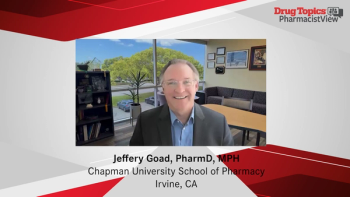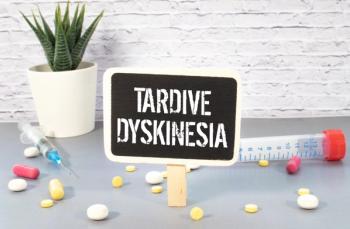
Examining the Patient Journey in TRD
The panel of experts highlight the patient journey commonly experienced in search of a treatment-resistant depression diagnosis.
Episodes in this series

Megan Maroney, PharmD, BCPP: We’ve talked about how we define treatment-resistant depression [TRD] and some of the treatment landscape. I want to finish by talking about some of the burdens associated with TRD. Dr Skolnik, can you talk us through what a typical patient journey is like from when they first develop symptoms to when they’re diagnosed with TRD?
Neil Skolnik, MD: What an awful term “typical patient journey” is because [everyone has a different journey]. Some patients come in and have terribly severe depression. I’ll start an antidepressant, but I’m pretty quickly going to refer them on. Often they have a tough time, and their journey through their disease very early is characterized by a referral to a psychiatrist. I may see them back, and they’ll sometimes have other things going on. I’ll know what’s going on, but they’ll go through a number of treatments as organized by the psychiatrist.
A different journey is someone coming in with moderate to severe depression or moderate depression. That’s the more typical patient that I’ll take care of: one who has mild or moderate to severe disease. I’ll usually start them with an SSRI [selective serotonin reuptake inhibitor] or, if they also have chronic pain, an SSNRI [selective serotonin-norepinephrine reuptake inhibitor]. I like to see patients back every 2 weeks for at least 3 visits in a row because it enhances compliance. But then they’re not moving; they’re not budging. They’re their PHQ-9 [Patient Health Questionnaire] isn’t moving, and they remain depressed. At that point, based on severity and shared decision-making—what a patient wants—I’ll refer them on or, more commonly, I’ll add something or make a switch. If I add something, I’ll try to decide within 3 months if they fit in the category of TRD. If they do, from my perspective, I’m sending them to someone like Dr Thase with more expertise in treatment-resistant depression.
Megan Maroney, PharmD, BCPP: Dr Thase, what’s the quality of life like for patients diagnosed with treatment-resistant depression?
Michael Edward Thase, MD: Depression robs you of the ability to think or to recall positive things. It causes you to worry more, to ruminate, or repeat negative things. [Patients tend] not to accept opportunities to go out and be with others, and it significantly impairs their ability to work productively. One of the few things Freud got right was talking about the essentialness of love and work to one’s sense of well-being. If you’re not able to feel loving feelings and connect in an intimate way, you’re not able to work productively, your quality of life is devastated. This is part of the problem that differentiates treatment-resistant depression from episodic, easier-to-treat depression. Imagine spending not months but years in this state. Marriages don’t hold. Children go unparented or underparented. Employers grow tired of absenteeism and presenteeism. Individuals don’t get promoted or are asked to leave. It’s ultimately a disabling disease.
Megan Maroney, PharmD, BCPP: Dr Skolnik, when you’re starting patients on an antidepressant, how do you counsel them about the time until it takes effect and the adverse effect profile?
Neil Skolnik, MD: I go over the adverse effect profile because if I don’t, patients will feel they’re having a bad reaction—forewarned is forearmed. If you can, anticipate that you’ll have GI [gastrointestinal] issues that usually get better and don’t remain. Then you’ll have a higher likelihood of [patients] putting up with it for a while. The sexual adverse effects are tough and can get tougher over time. They don’t tend to go away. But I’ll usually go over what adverse effects we anticipate. In terms of time, I usually share that this doesn’t work immediately. This isn’t like treating strep throat, where you’re going to feel better in 2 days. This is going to take weeks to months to work fully. I’m going to want to see you a couple of times over that time period to see how you’re doing. Some of what we do isn’t fully evidence based. I believe that knowing that someone is there with you, that someone is going to be checking in, is helpful. It probably enhances compliance with taking medicine. I’m fairly certain it helps you feel comfortable that you’re not out there in the wilderness alone. Then we see how they do.
Megan Maroney, PharmD, BCPP: That’s so key, talking about which adverse effects are likely to go away with time and which ones are not. Which ones do you need to bring up with the prescriber? Which ones will go away on their own or perhaps get better over time? It’s definitely important to reiterate that with patients.
Neil Skolnik, MD: We’re very medicine focused, but for patients with mild depression, the literature supports that CBT [cognitive behavioral therapy] has as good outcomes as medicines and better staying power. Once you stop CBT, you’ve learned something. You’ve learned how to approach certain challenges that you are subject to. For patients with mild depression, I give them the option of CBT and encourage them. There’s an excellent CBT therapist that I know. I’m not as familiar with interpersonal therapy, but that also has data to support it. Often I’ll use an antidepressant and refer them to someone for CBT. Or just CBT alone for some patients. That has real value.
Megan Maroney, PharmD, BCPP: Definitely. For those moderate to severe patients, the combination treatment is always best.
Transcript edited for clarity.
Newsletter
Pharmacy practice is always changing. Stay ahead of the curve with the Drug Topics newsletter and get the latest drug information, industry trends, and patient care tips.




































































































































